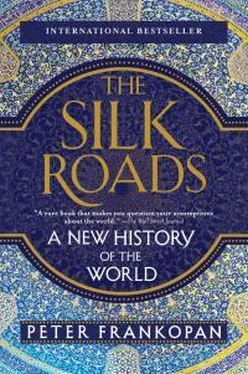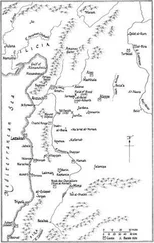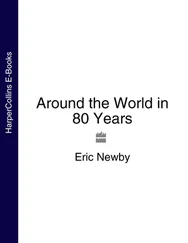95. H. Brands and D. Palkki, “Conspiring Bastards: Saddam Hussein’s Strategic View of the United States,” Diplomatic History 36.3 (2012), 625–59.
96. “Talking Points for Ambassador Rumsfeld’s Meeting with Tariq Aziz and Saddam Hussein,” 4 December 1983, cited by Gibson, Covert Relationship , p. 111.
97. Gibson, Covert Relationship , pp. 113–18.
98. Admiral Howe to Secretary of State, “Iraqi Use of Chemical Weapons,” 1 November 1983, cited by Gibson, Covert Relationship , p. 107.
99. Cited by Z. Fredman, “Shoring up Iraq, 1983 to 1990: Washington and the Chemical Weapons Controversy,” Diplomacy & Statecraft 23.3 (2012), 538.
100. The United Nations Security Council passed Resolution 540, calling for an end to military operations, but falling short of mentioning chemical weapons. According to one senior UN official, when the secretary-general, Javier Pérez de Cuéllar, raised the issue of looking into this matter, “he encountered an antarctically cold atmosphere; the Security Council wanted nothing of it.” Hiltermann, A Poisonous Affair , p. 58. Also here see Gibson, Covert Relationship , pp. 108–9.
101. Fredman, “Shoring up Iraq,” 539.
102. “Iraqi Use of Chemical Weapons,” in Gibson, Covert Relationship , p. 108.
103. Fredman, “Shoring Up Iraq,” 542.
104. A. Neier, “Human Rights in the Reagan Era: Acceptance by Principle,” Annals of the American Academy of Political and Social Science 506.1 (1989), 30–41.
105. Braithwaite, Afgantsy , pp. 201–2, and M. Bearden and J. Risen, Afghanistan: The Main Enemy (New York, 2003), pp. 227, 333–6.
106. Braithwaite, Afgantsy , p. 214; D. Gai and V. Snegirev, Vtorozhenie (Moscow, 1991), p. 139.
107. Braithwaite, Afgantsy , pp. 228–9.
108. Ibid., p. 223.
109. J. Hershberg, “The War in Afghanistan and the Iran–Contra Affair: Missing Links?,” Cold War History 3.3 (2003), 27.
110. National Security Decision Directive 166, 27 March 1985, National Security Archive.
111. Hershberg, “The War in Afghanistan and the Iran–Contra Affair,” 28; also H. Teicher and G. Teicher, Twin Pillars to Desert Storm: America’s Flawed Vision in the Middle East from Nixon to Bush (New York, 1993), pp. 325–6.
112. Braithwaite, Afgantsy , p. 215.
113. Coll, Ghost Wars , pp. 161–2, 71–88.
114. Beijing Review , 7 January 1980.
115. M. Malik, Assessing China’s Tactical Gains and Strategic Losses Post-September 11 (Carlisle Barracks, 2002), cited by S. Mahmud Ali, US–China Cold War Collaboration: 1971–1989 (Abingdon, 2005), p. 177.
116. Braithwaite, Afgantsy , pp. 202–3.
117. Cited by Teicher and Teicher, Twin Pillars to Desert Storm , p. 328.
118. “Toward a Policy in Iran,” in The Tower Commission Report: The Full Text of the President’s Special Review Board (New York, 1987), pp. 112–15.
119. H. Brands, “Inside the Iraqi State Records: Saddam Hussein, ‘Irangate’ and the United States,” Journal of Strategic Studies 34.1 (2011), 103.
120. H. Emadi, Politics of the Dispossessed: Superpowers and Developments in the Middle East (Westport, CT, 2001), p. 41.
121. Hershberg, “The War in Afghanistan and the Iran–Contra Affair,” 30–1.
122. Ibid., 35, 37–9.
123. M. Yousaf and M. Adkin, The Bear Trap (London, 1992), p. 150.
124. “Memorandum of Conversation, 26 May 1986,” Tower Commission Report , pp. 311–12; Hershberg, “The War in Afghanistan and the Iran–Contra Affair,” 40, 42.
125. Cited by Hershberg, “The War in Afghanistan and the Iran–Contra Affair,” 39.
126. S. Yetiv, The Absence of Grand Strategy: The United States in the Persian Gulf, 1972–2005 (Baltimore, 2008), p. 57.
127. E. Hooglund, “The Policy of the Reagan Administration toward Iran,” in Keddie and Gasiorowski, Neither East nor West , p. 190. For another example, see Brands, “Inside the Iraqi State Records,” 100.
128. K. Woods, Mother of All Battles: Saddam Hussein’s Strategic Plan for the Persian Gulf War (Annapolis, 2008), p. 50.
129. B. Souresrafil, Khomeini and Israel (London, 1988), p. 114.
130. Report of the Congressional Committees Investigating the Iran–Contra Affair, with Supplemental, Minority, and Additional Views (Washington, DC, 1987), p. 176.
131. For the arms sales, Report of the Congressional Committees Investigating the Iran–Contra Affair , passim.
132. A. Hayes, “The Boland Amendments and Foreign Affairs Deference,” Columbia Law Review 88.7 (1988), 1534–74.
133. “Address to the Nation on the Iran Arms and Contra Aid Controversy,” 13 November 1986, PPPUS: Ronald Reagan , 1986 , p. 1546.
134. “Address to the Nation on the Iran Arms and Contra Aid Controversy,” 4 March 1987, PPPUS: Ronald Reagan , 1987 , p. 209.
135. L. Walsh, Final Report of the Independent Counsel for Iran/Contra Matters , 4 vols (Washington, DC, 1993).
136. G. H. W. Bush, “Grant of Executive Clemency,” Proclamation 6518, 24 December 1992, Federal Register 57.251, pp. 62145–6.
137. “Cabinet Meeting regarding the Iran–Iraq War, mid-November 1986,” and “Saddam Hussein Meeting with Ba’ath Officials,” early 1987, both cited by Brands, “Inside the Iraqi State Records,” 105.
138. “Saddam Hussein Meeting with Ba’ath Officials,” early 1987, cited by Brands, “Inside the Iraqi State Records,” 112–13.
139. Ibid., 113.
140. Comprehensive Report of the Special Advisor to the Director of Central Intelligence on Iraq’s Weapons of Mass Destruction , 3 vols (2004), 1, p. 31; Brands, “Inside the Iraqi State Records,” 113.
141. Colin Powell Notes of meeting 21 January 1987, Woodrow Wilson Center, The Origins, Conduct, and Impact of the Iran–Iraq War .
142. Brands, “Inside the Iraqi State Records,” 112.
143. D. Neff, “The US, Iraq, Israel and Iran: Backdrop to War,” Journal of Palestinian Studies 20.4 (1991), 35.
144. Brands and Palkki, “Conspiring Bastards,” 648.
145. Fredman, “Shoring Up Iraq,” 548.
146. WikiLeaks, 90 BAGHDAD 4237.
147. “Excerpts from Iraqi Document on Meeting with US Envoy,” New York Times , 23 September 1990.
CHAPTER 25—THE ROAD TO TRAGEDY
1. Paul to Foreign & Commonwealth Office, “Saddam Hussein al-Tikriti,” 20 December 1969, FCO 17/871; “Saddam Hussein,” Telegram from British Embassy, Baghdad to Foreign and Commonwealth Office, London, 20 December 1969, FCO 17/871.
2. “Rumsfeld Mission: December 20 Meeting with Iraqi President Saddam Hussein,” National Security Archive. For the French and Saddam, C. Saint-Prot, Saddam Hussein: un gaullisme arabe? (Paris, 1987); also see D. Styan, France and Iraq: Oil, Arms and French Policy Making in the Middle East (London, 2006).
3. “Saddam and his Senior Advisors Discussing Iraq’s Historical Rights to Kuwait and the US Position,” 15 December 1990, in Woods, Palkki and Stout, Saddam Tapes , pp. 34–5.
4. President George H. W. Bush, “National Security Directive 54. Responding to Iraqi Aggression in the Gulf,” 15 January 1991, National Security Archive.
5. G. Bush, Speaking of Freedom: The Collected Speeches of George H. W. Bush (New York, 2009), pp. 196–7.
6. J. Woodard, The America that Reagan Built (Westport, CT, 2006), p. 139, n. 39.
7. President George H. W. Bush, “National Security Directive 54. Responding to Iraqi Aggression in the Gulf.”
Читать дальше











